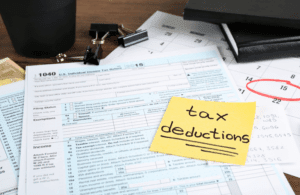Bookkeeping
Cumulative dividends are usually paid to preferred shareholders, who have a higher claim on the company’s assets than common shareholders. Preferred shareholders are also paid before common shareholders in the event of a liquidation. Specific conditions must be met for a company’s creditors to legally suspend dividend payments.
The dividends that should be paid to the preferred shareholders get accumulated if the company doesn’t earn sufficient profit to pay them. Whenever the company earns a profit, it must clear the past accumulated dividends first, and then common shareholders can be paid. One of the most important factors to consider when choosing a cumulative dividend stock is the financial health of the company.
Besides his extensive derivative trading expertise, Adam is an expert in economics and behavioral finance. Adam received his master’s in economics from The New School for Social Research and his Ph.D. from the University of Wisconsin-Madison in sociology. He is a CFA charterholder as well as holding FINRA Series 7, 55 & 63 licenses. He currently researches and teaches economic sociology and the social studies of finance at the Hebrew University in Jerusalem.
Advantages of Cumulative Dividends
So cumulative dividends provide an extra level of security for preferred shareholders – they have seniority in receiving dividend payments. This cumulative effect makes cumulative dividends unique from regular dividends on common shares. The compounding aspect causes unpaid cumulative dividends to grow perpetually over time until they are paid off.
Cumulative Dividends 101: A Beginner’s Guide to Compounding Payouts
If a buyer purchases a share after the ex-date, the seller sells it ex-dividend instead of cum dividend. In this case, the buyer would get the stock but would not be entitled to the distribution. There is no specific schedule for the release of dividends, and the payment dates can vary from company to company.
While the buyer won’t receive that quarter’s distribution, they will be entitled to future distributions if they continue to hold the shares. Let’s say an investor owns 100 shares of ecommerce firm PricedToSell, and the company’s board of directors has declared a quarterly dividend of $0.10 per share. The investor is considering selling their shares to finance another purchase. If they sell cum dividend, the buyer would receive the 100 shares at the current price and would be entitled to the $10 in dividend payouts. A cumulative dividend pays a fixed dividend amount depending on the dividend rate and par value of the stock. In other words, the dividend must be paid regardless of company profitability.
The company has a dividend yield of 2.6% and has increased its dividend payout for 58 consecutive years. Johnson & Johnson has a strong balance sheet and a diversified product portfolio, which makes it a great long-term investment. Before the announcement of year-end results for companies, dates are set out for closing the register for dividend payments and scrips. A stock is cum dividend, which means “with dividend,” when a company has declared that there will be a dividend in the future but has not yet paid it out.
How Cumulative Dividends Work
Unlike non-cumulative dividends, which the company can elect to halt at any time, cumulative dividends must be paid out to shareholders. This guarantees investors an extra degree of security in what might otherwise be a risky or less profitable investment. If a company is financially unable to pay the dividend, the dividends accumulate until it has sufficient cash to make the payment. Procter & Gamble (PG) – Procter & Gamble is a global consumer goods company that has been paying dividends for over 125 years. The company has a strong brand portfolio, including household names such as Tide, Crest, and Pampers.
Australian investors once focused on the ASX, but the success of US tech stocks and rise of international shares ETFs has changed the investing landscape. In order to calculate a stock’s cumulative dividend per share, there are a few simple steps. Preferred shares are similar to common shares in that they represent an ownership interest, and the share price value can appreciate. Discover the key financial, operational, and strategic traits that make a company an ideal Leveraged Buyout (LBO) candidate in this comprehensive guide. However, Daybreak experiences financial difficulties that year and opts to pay half of the dividend only.
If a company that pays cumulative dividends experiences a decline in its stock price, it can have a significant impact on the value of the dividends that investors will receive. Cumulative dividends are intended to ensure investors receive at least a minimum return on their investment in the company. If a company is financially unable to pay the dividend, they accumulate until it has sufficient cash to make the payment. When it comes to choosing the best cumulative dividend stock, it’s important to consider a company’s financial health, dividend history, and future growth prospects. While all of the above stocks have a strong dividend history and are reliable investments, some may be more suitable for certain investors than others. Cumulative dividends work by accumulating any unpaid dividends from previous periods and paying them out at a later date.
This situation often results from the timing of the sale rather than the 5 cash flow performance kpis every cfo needs to track preference of the seller. Company A has a dividend yield of 2%, while Company B has a dividend yield of 5%. While Company B may seem like the better choice, you need to consider why the dividend yield is so high. If Company B is not reinvesting enough money into the business, it may not be sustainable in the long run. Since Colin is looking to purchase 1,000 preferred shares, he would be entitled to $5,000 annually. Investors who receive dividends receive a Form 1099-DIV from the issuer, which must be reported on their annual tax returns.
- In this section, we will discuss some final thoughts and conclusions on this strategy.
- Cumulative dividend stocks are a particularly attractive option for investors who are looking for stable, long-term income.
- Companies that operate in stable industries with strong growth prospects are generally more likely to be able to generate consistent cash flow and pay out regular dividends.
- If the company is in financial trouble or chooses to withhold dividends, shareholders simply have to go without.
- Company A is in the retail industry, which is currently declining due to the rise of e-commerce.
- When you have cumulative dividends owed, reinvested dividends to track, and years’ worth of financial data to compare, even the most careful spreadsheet starts to crack under pressure.
Because cumulative dividends are a binding obligation, a company must pay them out before distributing common dividends to the rest of their shareholders. If a company cannot afford to pay its cumulative dividends on time, it must halt payments to all shareholders while it sources the capital necessary to clear the debt. During that time, unpaid cumulative dividends must also be announced in financial statements. One of the biggest risks of cumulative dividend investing is the risk of dividend suspension or cancellation. when will i get my tax rebate if i used turbo tax online to file my tax return When a company decides to suspend or cancel its dividend, it can have a significant impact on the stock price.
This is usually because dividend-issuing companies are not financially equipped to pay their shareholders. Shareholders of cumulative preferred stock are usually the first in line, which means they receive their dividends before any other shareholders. Yes, cumulative dividends are typically reported as a liability on the company’s balance sheet. The cumulative amount of unpaid dividends represent an obligation to preferred shareholders, and therefore, it is listed as a liability until the dividends are paid. Cumulative dividends must be paid by the issuer of preferred stock either at the due date or at a later date, if necessary. Another risk of cumulative dividend investing is the risk of opportunity cost.
In return for financing the company, preferred shareholders are guaranteed set cumulative dividends which are paid to them periodically – even if the company isn’t operating at a profit. Cumulative dividend investing can be a highly effective strategy for building wealth and generating passive income over time. When choosing a cumulative dividend stock, you want to consider the financial health of the company, the dividend yield, the dividend growth rate, and industry trends. By considering these factors, you can make an informed decision about which cumulative dividend stock is right for your portfolio. If ABC Company is unable to pay dividends in the current year to preferred shareholders, the dividend amount is carried forward to later years.
While the number of entries might differ, the recording process does not. For example, Colfax might purchase food items in one large quantity at the beginning of each month, payable by the end of the month. Therefore, it might only have a few accounts payable and inventory journal entries each month. Larger grocery chains might have multiple deliveries a week, and multiple entries for purchases from a variety of vendors on their accounts payable weekly. When you sell the $100 product for cash, you would record a bookkeeping entry for a cash transaction and credit the sales revenue account for the sale. This transaction transfers the $100 from expenses to revenue, which finishes the inventory bookkeeping process for the item.
Prime Costs: Definition, Formula, Explanation, and Example
Some of the listed transactions have been ones we have seen throughout this chapter. More detail for each of these transactions is provided, along with a few new transactions. Note that this example has only one debit account and one credit account, which is considered a simple entry.
You will notice that the transactions from January 3, January 9, January 12, and January 14 are listed already in this T-account. The next transaction figure of $2,800 is added directly below the January 9 record on the debit side. The new entry is recorded under the Jan 10 record, posted to the Service Revenue T-account on the credit side.
Peruse Best Buy’s 2017 annual report to learn more about Best Buy. Take note of the company’s balance sheet on page 53 of the report and the income statement on page 54. These reports have much more information than the financial statements we have shown you; however, if you read through them you may notice some familiar items. Another key element to understanding the general ledger, and the third step in the accounting cycle, is how to calculate balances in ledger accounts. Using the purchase transaction from May 4 and no returns, Hanlon pays the amount owed on May 10.
- This raw materials inventory account usually includes both direct raw materials and indirect raw materials.
- We learned shipping terms tells you who is responsible for paying for shipping.
- Some of the listed transactions have been ones we have seen throughout this chapter.
- The balance at that time in the Common Stock ledger account is $20,000.
- The new entry is recorded under the Jan 10 record, posted to the Service Revenue T-account on the credit side.
For example, if the company ABC has not received raw materials on December 31, there should be no recording either. There would be an overstatement of total assets and total liabilities instead if it made the journal entry before receiving the raw materials. Raw materials are recorded on the balance sheet as a current asset under inventories lime items. When raw materials are being recorded, a debit entry is processed in the raw material inventory account (to record increasing assets).
You notice there is already a credit in Accounts Payable, and the new record is placed directly across from the January 5 record. You can see at the top is the name of the account “Cash,” as well as the assigned account number “101.” Remember, all asset accounts will start with the number 1. The date of each transaction related to this account is included, a possible description of the transaction, and a reference prepare deferred revenue journal entries number if available. There are debit and credit columns, storing the financial figures for each transaction, and a balance column that keeps a running total of the balance in the account after every transaction. When we introduced debits and credits, you learned about the usefulness of T-accounts as a graphic representation of any account in the general ledger. But before transactions are posted to the T-accounts, they are first recorded using special forms known as journals.
Chartered accountant Michael Brown is the founder and CEO of Double Entry Bookkeeping. He has worked as an accountant and consultant for more than 25 years and has built financial models for all types of industries. He has been the CFO or controller of both small and medium sized companies and has run small businesses of his own. He has been a manager and an auditor with Deloitte, a big 4 accountancy firm, and holds a degree from Loughborough University. Difference between overhead applied to work in process and actual overhead. Units of product that are only partially complete are contained in the _____ ______ ________ inventory.
No matter the size of a company and no matter the product a company sells, the fundamental accounting entries remain the same. You can see that a journal has columns labeled debit and credit. The debit is on the left side, and the credit is on the right. The last phase is the time it takes the finished goods to be packaged and delivered to the customer. A chart of accounts lists each account type, and the entries you need to take to either increase or decrease each account. Additional entries may be needed besides the ones noted here, depending upon the nature of a company’s production system and the goods being produced and sold.
Direct Materials Requisitioned by the Shaping and Packaging Departments and Indirect Material Used
You will notice that the transaction from January 3 is listed already in this T-account. The next transaction figure of $4,000 is added directly below the $20,000 on the debit side. This is posted to the Unearned Revenue T-account on the credit side.
Bookkeeping
The costs fas in accounting of goods ________ are the sum of all amounts transferred from Work in process to Finished goods during a period. The costs of goods manufactured is the cost of jobs completed during the period – Jobs 23A and 45B. Estimated manufacturing overhead divided by estimated allocation base.
Buyer Entries under Perpetual Method
Examples of direct raw materials constitute cloth, which is required to manufacture a certain suit. Indirect raw materials, in this case, can be the lubricant that is required to ensure the smooth functioning of the sewing machine. Without direct materials, the final product which the company produces cannot be produced or subsequently sold. The schedule of cost of goods ________ summarizes costs that remain in Work in process inventory and that have been transferred from work in process to finished goods inventory. Debits depreciation expense, while the other debits manufacturing overhead. It is a good idea to familiarize yourself with the type of information companies report each year.
Move Raw Materials to Work in Process
Depending on the size and complexity of the business, a reference number can be assigned to each transaction, and a note may be attached explaining the transaction. The entry would have been the same to record a $ 350 allowance. A purchase return occurs when a buyer returns merchandise to a seller. When a buyer receives a reduction in the price of goods shipped but does not return the merchandise, a purchase allowance results.
Create a payment schedule that aligns with your cash flow and takes advantage of early payment discounts while avoiding late fees. Accurate accounts payable records are essential for regulatory compliance and financial reporting. Accounts payable (AP) and accounts receivable (AR) are the financial yin and yang of any business, representing the money flowing out and into an organization. This article will break down the differences between AP and AR, explore best practices, and show how accounts receivables tools like Kolleno can help businesses stay financially afloat. The AP process begins when a company receives goods or services from a supplier. The supplier then sends an invoice to the company, which is recorded in the AP system.
Financial Loan Consulting
These include regularly reconciling accounts, using technology to automate the accounts receivable processes, and implementing a system for managing and tracking invoices. Improving these processes can help your business better manage its finances, reduce the risk of errors, and make better decisions about its cash flow. Managing this relationship effectively is critical to maintaining a healthy cash flow.
- Look for modern platforms that streamline global payments to speed up your AR process.
- Accounts payable and accounts receivable are essential aspects of a company’s financial health and share several similarities.
- Similarly, estimated utility usage in December, even with bills arriving in January, is also recorded as an accrued expense.
- Automation reduces human error, speeds up approvals, and ensures accurate record-keeping, saving time and resources for both accounts payable and receivable processes.
Accounts receivable and payable have inverse effects on a company’s cash flow statement. As a business makes credit sales, its AR increases, tying up capital you could otherwise use to fund operations or investments. When clients receive goods and services from your company on credit, you record those funds as an asset on your balance sheet.
- When a business makes a credit sale, it records the transaction through an accounts receivable journal entry.
- Until your customer pays the bill, the outstanding amount is recorded under accounts receivable.
- As a complete procure-to-pay platform, it integrates purchasing and payment processes in a single, easy-to-use system.
- Managing accounts receivable effectively is vital, as it ensures that cash flow remains consistent, allowing the business to continue operations smoothly.
- After delivering goods or services, a business sends invoices to its customers, detailing the amount owed, payment terms, and due dates.
Financial reporting and impact.
It ensures that the company has enough liquidity to meet its short-term financial obligations. Disagreements with vendors over invoices can be time-consuming and may require substantial effort to resolve. These disputes can strain relationships and disrupt the procurement process. It allows businesses to schedule payments strategically, ensuring that they have enough liquidity to meet their financial obligations without any further disruptions. Any type of invoice that needs to be paid by an organization falls under the accounts payable department’s responsibility. Implementing Paystand’s solutions can transform your AR processes, making them more efficient and effective.
Approval
The total you owe might be at the top of the document or all of the way at the bottom. The method you receive them through can also be varied, with some invoices coming through traditional snail mail while others show up in your inbox. A rapidly expanding business may find that its in-house AP processing can’t keep up. Outsourcing offers access to scalable AP support without the need to hire and train additional staff. TallyPrime is a complete business management software to manage your business easily, faster, and efficiently. Volopay integrates seamlessly with your existing accounting systems, ensuring a smooth flow of information.
Data entry errors
Whereas, trade payables are the money your company owes to its vendors for inventory-related goods like business inventory or supplies. This tracking helps you manage cash flow, prioritize payments, and stay on top of your financial obligations. The software tracks outstanding balances for both accounts payable and receivable, giving you a clear view of what you owe and what is owed to you. This reconciliation process ensures that your accounts payable and receivable records are accurate and up-to-date.
Balancing both processes is essential to maintain a healthy cash flow and ensure the financial stability of the organization. Businesses must monitor which invoices have been paid and which are still outstanding. This step often involves maintaining an accounts receivable account, which records the amounts due and ensures accurate financial reporting. Accounts Receivable (AR) can be harder because it involves actively managing collections from customers, addressing disputes, and minimizing bad debts. Ensuring timely payments and maintaining customer relationships can be challenging. Accounts receivable (AR) represents money owed to a company by its customers for goods or services that have been delivered but not yet paid for.
Accounts payable and accounts receivable are two opposite concepts of business accounting. Implementing automation tools, such as optical character recognition (OCR) technology, can streamline invoice processing. Automation reduces human error, speeds up approvals, and ensures accurate record-keeping, saving time and resources for both accounts payable and receivable processes.
When a business receives goods or services but defers payment to a later date, it records the amount owed as accounts payable. This liability is critical to the company’s financial health, as it impacts both short-term obligations and cash flow management. Accounts payable (AP) are what a company owes to suppliers or vendors for goods and services received on credit. In this sense, accounts payable relates to the short-term liabilities of a company to creditors. This is one of the essential elements of financial management that every business has to consider.
Reconciling accounts payable and accounts receivable is essential to identify errors, prevent fraud, and maintain accurate financial reporting, and supporting overall financial health. Efficient invoice processing is crucial for maintaining the difference between accounts payable and accounts receivable smoothly. Every individual who is part of a company’s finance team or is closely related to its operations needs to understand the nuances between accounts payable and accounts receivable. These two concepts form the foundation of a business’s financial operations and play a significant role in its success. Regularly review your cash flow to identify trends and potential bottlenecks. Monitoring helps ensure that your accounts payable doesn’t create cash shortages and that your accounts receivable is bringing in money promptly.
Approval workflows should be set up in such a way that all payments are to be verified but at the same time should not disrupt the work and productivity of senior executives. This will help you avoid invoices being sent back for corrections and the time spent making the necessary corrections and sending them back. Relying on manual processes for invoicing and collections is inefficient, prone to errors, and can result in delays. Without an adequate inflow of cash, there won’t be enough working capital to manage operations.
Both play an essential role in a company’s financial health, but they serve opposite functions. Understanding the differences between these two can significantly improve your business’s cash flow management and decision-making. “Accounts Receivable” represents the funds customers owe to the business for products or services they have received but have not yet paid for. “Accounts Payable” refers to the funds the business owes to its suppliers or creditors for goods or services received but not yet paid for. It is accounts payable vs accounts receivable important to understand the difference between accounts payable vs receivable to manage finances effectively. Aligning incoming payments from accounts receivable with outgoing payments from accounts payable helps maintain financial stability and avoid liquidity issues.
Without SoD, a single person could potentially authorize, process, and execute payments, creating a risk of fraud, error, or even unintentional duplicate payments. The faster your company can move through the accounts receivable process, the faster you can convert receivables into cash. Both AP and AR are worth understanding in order to get a handle on your healthy cash flow. Without clear information from these accounts, it will be difficult to see whether your business is operating at a profit or loss. As a result, employ someone, outsource to a third-party, or work carefully on your own to make sure all your records are up-to-date and carefully managed.

Determining your beginning inventory’s value shouldn’t be too complicated. For example, if you were a fabric store owner, you’d know exactly how much you paid your supplier for each bolt of cloth or skein of yarn. You’d simply add up how much it cost to acquire each product and, voilà, you’ve found your beginning inventory’s total value. If you haven’t decided on a method yet, factor in how each may affect your cost of goods sold. For more information on how to pick an inventory valuation method, read our FIFO vs. LIFO explainer. The categorization of expenses into COGS or operating expenses (OpEx) is entirely dependent on the industry in question.

Are salaries included in COGS?
- If you haven’t decided on a method yet, factor in how each may affect your cost of goods sold.
- It involves a simple formula and can be calculated monthly to keep track of progress or even less frequently for more established businesses.
- Once those 10 rings are sold, the cost resets as another round of production begins.
- Once you calculate your cost of goods sold, either manually or by using accounting software, the total will be reported on your income statement.
It can also impact your borrowing ability when you are ready to scale up your business. As you can see, calculating your COGS correctly is critical to running your business. For information pertaining to the registration status of 11 Financial, please contact the state securities regulators for those states in which 11 Financial maintains a registration filing. Find ways to reduce or eliminate waste in your production process.

What Cost Of Goods Sold Does NOT Include
This is not fair if the product or raw material price significantly fluctuates. This type of method is also not allowed based on the current accounting standard (IFRS). However, other factors affect the cost of goods sold, for example, the valuation method of inventories, the ending balance, and the beginning balance of inventories. Eric is an accounting and bookkeeping expert for Fit Small Business.
- Importantly, COGS is based only on the costs that are directly utilized in producing that revenue, such as the company’s inventory or labor costs that can be attributed to specific sales.
- Calculating the cost of goods sold, often referred to as COGS in accounting, is essential to determining whether your business is making a profit.
- The balance sheet reflects the ending inventory, which is directly influenced by the COGS calculation.
- In this example of a small business budget, we’ve listed sample income, expense, and cash flow information using categories that are relevant to a small retail business.
- The time period you pick is up to you, but we recommend calculating your cost of goods sold at least quarterly.
- Although this system is inexpensive, it isn’t the most ideal inventory system because there are extended lag times in real data.
- Many service companies do not have any cost of goods sold at all.
Cost of Goods Sold: Definition, Formula, Example, and Analysis

Multi-step profit and loss statements are a little more complicated. Instead of listing COGS as an expense, these types of statements deduct COGS directly from sales revenue to calculate the business’s what is a master budget gross profit. The statement then divides expenses into operating expenses (OPEX) and non-operating expenses. Correctly calculating the cost of goods sold is an important step in accounting.
One way to reduce your COGS is to negotiate better prices from your suppliers.
Beginning inventory is the cost value of the merchandise or goods that a business had on hand at the beginning of a period. Beginning inventory is important to calculate COGS, as it must be subtracted from ending inventory to arrive at COGS. The closing inventory refers to any goods still in stock at the end of your chosen period. You need to subtract this number from your opening inventory and total purchases to get your COGS figure. The cost of goods sold equation might seem a little strange at first, but it makes sense. Remember, we want to calculate the cost of the merchandise that was sold during the year, so we have to start with our beginning inventory.

Streamline Small Business Budgeting Real-Time Work Management in Smartsheet

What Is the Cost of Goods Sold Formula?
- We may earn a commission when you click on a link or make a purchase through the links on our site.
- Utilizing our cost of goods sold calculator, we aim to help you assess the total cost incurred of producing and selling goods.
- A well-considered budget should help a small business to encounter fewer unforeseen expenses and more opportunities.
- This includes things like excess materials, defective products, and unused packaging.
- For instance, if you currently purchase rocking chairs from a vendor for resale, your cost of goods sold reflects the cost of purchasing the chairs from your vendor, including freight costs.
- If you’re a manufacturer, you need to have an understanding of your cost of goods sold, and how to calculate it, in order to determine if your business is profitable.
A debit memorandum is a specific type of notice that a client would receive if their account balance happens to decrease. The notice gets sent out so the client can then rectify the situation. Debit memorandums are also commonly referred to as a debit memo or a debit note. Debit memos are a common phenomenon in the banking and finance sectors. When a bank charges a fee, it often issues a debit memo to the affected bank account.
Is a Debit Memo the Same as a Debit Note?
A debit memo, also called a debit note, is a document issued by a seller to inform the buyer of an increase in the amount owed or a chargeback against the buyer’s account. However, in some cases, buyers can also issue a debit note to the seller when returning goods received on credit. One example of a debit memo is when a seller issues a credit memo to decrease the invoice total payment. If the buyer had paid the invoice, he issued a debit note to request his money back. Bank fees are one reason a bank may use a debit memo to decrease an account balance.
Debit Memos to Increase Prior Invoices
Debits and credits are the accounting method used to keep track of these transactions. It is rare to see the term debit receipt used for B2B transactions. You are most likely to hear about a debit note following an under-billed invoice. Suppose a supplier shipped $10,000 worth of materials to a client, but only sent an invoice for https://chelyab.ru/cnews436.html $9,500. Upon realizing its mistake, the supplier could submit a debit note to its client for the difference of $500 to resolve the issue and make any proper adjustments to its accounting records. Debit notes are a form of proof that one business has created a legitimate debit entry in the course of dealing with another business.
What is a debit memo and credit memo in accounts receivable?
- A debit memo may also be used when adjusting an incorrect account balance.
- So, in this case, XYZ company will send a debit note to the customer, notifying them about the undercharging and requesting a payment of $200.
- It is also raised due to any change in terms of an agreement on the parties’ request.
- There can be instances wherein a business encounters that they have undercharged the buyer, or maybe there are some additional charges that the buyer needs to pay.
- In such cases, you can issue credit memos to your customers with the credit amount.
Both types of memos significantly impact internal financial accuracy, regulatory compliance, and effective communication with customers. They provide clear, documented trails for financial audits and help businesses manage their accounts with precision. A credit memo acts like a voucher, communicating when a business owes a customer money—for example, when a customer has been overcharged or decides to return a product.
- If you bank online, you can typically check your transactions at any time on the app or website.
- When you open a checking account or savings account, it’s important to understand the fee structure so that you aren’t surprised by a debit memo on your monthly account statement.
- There are often issues that arise, such as overcharging or returned items, which require financial adjustments.
- The taxes and cost of goods should always be separate line items in the note.
- When you receive notification of a debit, you’ll want to take it into account when balancing your bank account.
- If a company completes an order and invoices the client for less than the agreed amount, they send a debit memo to indicate and detail the balance.
The debit memo notifies the seller than the buyer has received nonconforming goods, wants to keep them, and is debiting its payable account for the discounted price. When the buyer debits its accounts payable, it is reducing the amount of money that it owes the seller in the buyer’s accounting system. The seller can then agree to the debit memorandum and adjust its accounts receivable for the discount as well. This article will explain the details of credit and debit memos and how they help businesses maintain financial integrity. Whether you need to issue a credit or debit memo, you’ll know how to handle it professionally and efficiently.
You can use the memos to adjust invoices at a line item level and provide your customers with memo documents to track billing changes. When you take the item back to the store, the clerk will issue you a refund by reversing the original purchase transaction. Unless it’s http://skinwp.ru/articles/otkrytie-scheta-v-evropejskom-banke/ in cash, the refund will appear back in your bank account or on your credit card. A credit memo appears as a separate transaction from the original purchase. It represents a credit towards future purchases or a reduction in the amount owed by the buyer to the seller.
The good news is we put together this guide to cover the most important pieces of information. After understanding the essential components of a debit memo, let’s see when businesses use them. To clarify a bit more, debits are amounts owed that must be remitted to settle and account. Credits are money that an individual or business is owed, perhaps reflecting an overpayment, which may be applied to future purchases. Debit notes can also be created by buyers when returning goods received on credit.
- The bank’s liability is reduced when the bank charges the company’s account for a bank fee.
- Doing so notifies the buying company that their accounts payable will increase to rectify the unpaid amount.
- A debit memo is a financial document used to adjust or correct errors in financial transactions.
- This will ensure a smooth process flow and less complexity in maintenance of financial records.
A popular example of this debit memorandum is found at local gas stations or fast food chains. For a Force Pay memo debit fund authorization, customers are expected to pay and ensure that the debit memo goes through before any goods or services are released. If a company completes an order and invoices the client for less than the agreed amount, they send a debit memo to indicate and detail the balance.
Maybe you paid an invoice early and got a credit for a percentage of the invoice amount. Or maybe the product was on sale or you purchased in bulk and got a discount through a credit memo. In contrast, a http://znamus.ru/page/vladimir_evtushenkov, also called a debit memorandum, decreases the amount of money in an account.

Cash flow is severely reduced when a tenant does not pay in full and it’s literally non-existent if your tenant misses a payment. On top of that, you’re now forced to cover all expenses out of pocket (mortgage, if you have one, insurance, taxes, etc.). Whether due to inflation or favorable market conditions, the long term trend for rents is usually up. So, when a tenant’s lease comes up for renewal, property owners should review market conditions and raise rents if possible. In addition, they may add a clause to the lease that calls for periodic rent increases at regular intervals over the term of the lease.

Negative cash flow
Sensitivity analysis results should also be reviewed to understand how changes in variables like rental growth rates or discount rates affect the valuation. Forecasting it accurately requires analyzing market conditions, lease agreements, and vacancy rates. Factors such as payroll location, property type, and tenant demand significantly impact projections. Lease escalations, which are periodic rent increases, should also be factored in, along with potential reductions due to rent-free periods or tenant improvements. Analysts should adhere to revenue recognition principles to ensure forecasts align with accounting standards. Frequently, investors encounter various financial metrics that help assess real estate performance, with net operating income (NOI) standing out as a key indicator.
What Are the Three Factors That Determine Cash Flow in Real Estate?
These advantages make cash flow real estate an attractive investment option for individuals looking to secure their financial futures. These advantages make cash flow real estate an attractive investment strategy for Coffee Shop Accounting individuals looking to build wealth, achieve financial goals, and secure their financial future. Investing in cash flow real estate can provide financial stability and security. Positive cash flow ensures a consistent income stream that can help cover expenses, including mortgage payments, property taxes, and other financial obligations. This stability can reduce financial stress and provide a sense of security for investors.

What Is Cash Flow in Real Estate?

Conversely, a weak economy or unfavorable market conditions can have a negative impact on cash flow. Learn how cash flow real estate can help you achieve financial freedom and build wealth. The cost of insurance will depend on factors like location, property type, and coverage level. Landlords should ensure their policies cover damages to the property, liability, and potential loss of rental income. For example, if a property has a purchase price of $100,000, the Percent Rule suggests that the monthly rent should be at least $1,000. Real estate investors often use guidelines or rules of thumb to assess the potential cash flow real estate definition profitability of a property quickly.
- These metrics can be compared against alternative investments or the investor’s hurdle rate.
- Higher rental income and lower vacancy rates typically result in increased positive cash flow.
- Tenant stability and lease terms, including turnover rates and lease durations, contribute to income predictability.
- The cost of insurance will depend on factors like location, property type, and coverage level.
- This may include investing in better amenities or a building-wide access control solution.
- If cash flow is negative, it means that rental income less operating expenses and debt service results in a negative number.
Importance of Positive Cash Flow

Cash flow analysis is a financial tool for evaluating the risk and profitability of a real estate investment. Using all sources of income and expenses, you calculate the potential net cash a property might generate. Getting a positive number after subtracting your operating expenses and debt service from your total revenue means you have good cash flow in real estate. It all starts with choosing a sensible location for cash-flow-positive properties, selecting the right type of investment for that area, and employing a long-term strategy. Cash flow in real estate describes the movement of money in and out of a property.

When learning bookkeeping basics, it’s helpful to look through examples of debit and credit accounting for various transactions. In general, debit accounts include assets and cash, while credit accounts include equity, liabilities, and revenue. As a general overview, debits are accounting entries that increase asset or expense accounts and decrease liability accounts. It either increases an asset or expense account or decreases equity, liability, or revenue accounts. It either increases equity, liability, or revenue accounts or decreases an asset or expense account.
Because the allowance is a negative asset, a debit actually decreases the allowance. A contra asset’s debit is the opposite of a normal account’s debit, which increases the asset. Debit notes are a form of proof that one business has created a legitimate debit entry in the course of dealing with another business (B2B).
- Each sheet of paper in the folder is a transaction, which is entered as either a debit or credit.
- The concept here is similar; a debit can also show an increase in expenses on your profit and loss statement.
- Keeping up with these changes can be resource-intensive, often requiring periodic audits and reviews to avoid legal and financial penalties.
- Assets are items that provide future economic benefits to a company, such as cash, accounts receivable, inventory, and equipment.
- Your “furniture” bucket, which represents the total value of all the furniture your company owns, also changes.
- However, back when people kept their accounting records in paper ledgers, they would write out transactions, always placing debits on the left and credits on the right.
What makes Zoho Books particularly appealing is its automation features—automatic bank feeds, reconciliation, and custom workflows reduce manual entry and the possibility of errors. You would debit (reduce) accounts payable, since you’re paying the bill. When you pay the interest in December, you would debit tax dates and deadlines in 2021 the interest payable account and credit the cash account. For example, if a business takes out a loan to buy new equipment, the firm would enter a debit in its equipment account because it now owns a new asset. The debit entry typically goes on the left side of a journal.
Debits and credits are used in each journal entry, and they determine where a particular dollar amount is posted in the entry. Your bookkeeper or accountant should know the types of accounts your business uses and how to calculate each of their debits and credits. That can happen when a security purchased on margin falls in value. The debit balance in a margin account is the amount of money a brokerage customer owes their broker for funds they’ve borrowed from the broker to purchase securities on margin. After the debit balance gets posted, it can be offset using a credit balance. When a margin account only has short positions, though, it will show a credit balance as well.
Equity
In this case, those claims have increased, which means the number inside the bucket increases. Some buckets keep track of what you owe (liabilities), and other buckets keep track of the total value of your business (equity). An accountant would say we are “debiting” the cash bucket by $300, and would enter the following line into your accounting system.
What to Include on Your Balance Sheet
For the most part, though, debit cards tend to act like credit card transactions. This is because we are purchasing more things by electronic means. When this happens, it takes a few business days for things to process. Debit and credit card transactions relate to accounting transactions of the same name. When looking at them, a debit card and a credit card look nearly identical.
In a margin account, the debit amount listed is the amount of money the investor owes to the broker. These funds get advanced to the investor by the broker to allow them to purchase securities. Anything that costs a business money during operations is an expense. Some common examples of expenses a business might incur are wages and supplies.
An accountant would say that we are crediting the bank account $600 and debiting the furniture account $600. In double-entry accounting, every debit (inflow) always has a corresponding credit (outflow). Just like in the above section, we credit your cash account, because money is flowing out of it. An accountant would say you are “crediting” the cash bucket by $600. To use that same example from above, if you received that $5,000 loan, you would record a credit of $5,000 in your liabilities account.
Revenue accounts are accounts related to income earned from the sale of products and services. Because your “bank loan bucket” measures not how much you have, but how much you owe. The more you owe, the larger predicting voluntary turnover the value in the bank loan bucket is going to be. Your “furniture” bucket, which represents the total value of all the furniture your company owns, also changes. Learn more details about the elements of a balance sheet below.
What’s the Difference Between a Debit and a Credit?
Often, debit notes get issued as a result of a received credit note. Having a balance sheet makes it easy to keep track of your debits and credits, so you can see outgoing and incoming cash flow. Every debit transaction should have a credit transaction to balance the books.
Which accounts are increased with a debit and decreased with a credit?
Debits and credits are bookkeeping entries that balance each other out. In a double-entry accounting system, every transaction impacts at least two accounts. If you debit one account, you have to credit one (or more) other accounts in your chart of accounts.
Debits VS Credits: A Simple, Visual Guide
This balance ensures that your financial data remains structured and trustworthy. Today, most bookkeepers and business owners use accounting software to record debits and credits. However, back when people kept their accounting records in paper ledgers, they would write out transactions, always placing debits on the left and credits on the right. To accurately enter your firm’s debits and credits, you need to understand business accounting journals. A journal is a record of each accounting transaction listed in chronological order.




Comentários